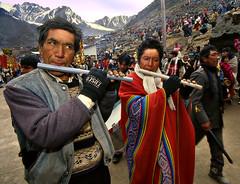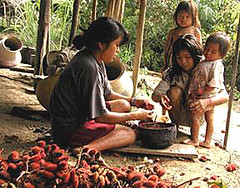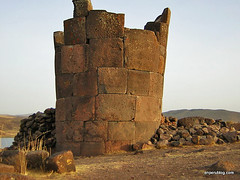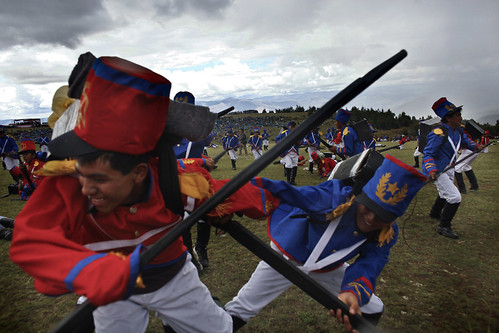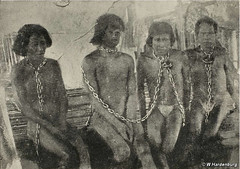Huacas of Manchay Alto
There’s not much left of it now, but there is something special about this temple complex in the Lurín valley that makes it so interesting. At about 3000 years old, it makes the city of Pachacamac just to the southwest look positively modern.

Main Pyramid
Let’s go back centuries before the Incas, yet more centuries before the Wari, and more than a full 2000 years before the Lima. In this period of time the valley of Lurín was inhabited by the Manchay culture, who’s development would have followed a similar pattern to that of the people of Caral. These pre-Chavin people are to whom we owe the legacy of dozens of U-shaped temples across the modern region of Lima from the valley of Chancay to that of Lurín.
Like many cultures of that period, their religious centres were formed around a large square or rectangle. On the top side was the largest and grandest pyramid topped by a temple, while on two other sides were smaller pyramid structures. For this reason they are called “U-Shaped” temples.
The collective culture of the Manchay was at its strength between 1800BC – 800BC, and just as with the people of Caral, we are unsure as to why they faded from existence, leaving a period of a few hundred years where huge monuments ceased to be built.
It is also the Manchay we have to thank for the wide green areas found in valleys such as Lurin, Rimac, Chillón and Chancay. It was they who first farmed the lower areas of these valley, creating fertile land with newly developed irrigation techniques.
Photos –
Tags: huaca, lima precolombina, lurin valley, manchay, manchay alto, pyramids, u-shaped-temple



